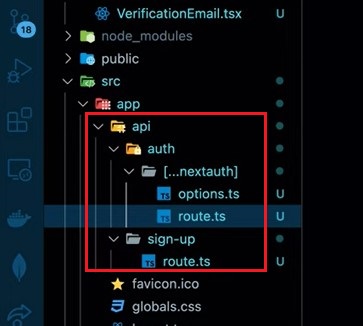Introduction
1. Introduction to NextAuth.js
NextAuth.js is a complete authentication library for Next.js applications. It simplifies the process of adding authentication (login, sign-up, etc.) to your app by providing built-in support for popular authentication providers like Google, GitHub, Facebook, and more. It also supports email/passwordless authentication and custom databases.
Key Features:
- Easy Integration: Seamlessly integrates with Next.js.
- OAuth Support: Works with providers like Google, GitHub, and more.
- Session Management: Built-in session handling for secure user management.
- Scalable and Secure: Implements industry-standard security practices.
- Extensible: Customize with adapters and callbacks.
2. Why Use NextAuth.js?
- Saves Time: No need to build authentication from scratch.
- Secure: Implements best practices for security.
- Flexible: Supports multiple authentication providers.
- Community Support: Actively maintained and widely used in the Next.js ecosystem.
3. Installation and Setup
Step 1: Install NextAuth.js
Run the following command in your Next.js project directory:
pnpm add next-auth
Step 2: Folder Structure
- Create an
authfolder in your project. - Inside the
authfolder, create a dynamic route folder named[...nextauth](using square brackets for dynamic routing). - Add the following files inside the
[...nextauth]folder:- A TypeScript file (
[...nextauth].ts) - A route file (
route.ts) inside theapidirectory.
- A TypeScript file (
Here’s an example of the folder structure:

4. Credential Providers in Next.js
NextAuth.js supports three types of authentication providers:
- Credentials-based Login: Email/Password or Username/Password.
- Email Login: Standard Email-Password authentication.
- OAuth Login: Integration with providers like Google, GitHub, etc.
Configuring a Provider
- Navigate to the Providers tab in your NextAuth.js configuration.
- Choose the provider you want to integrate (e.g., Google, GitHub).
- For GitHub login, obtain the Client ID and Client Secret from GitHub’s developer settings.
- Add these details to your Next.js authentication configuration.
Defining Providers in Code
- Use square brackets (
[...]) to define supported providers. - Example: For GitHub authentication, use
GitHubProvider. - For multiple providers, specify them accordingly (e.g.,
GoogleProvider,FacebookProvider).
5. Important: Security Best Practices
We highly encourage the use of OAuth credentials over traditional credentials (email/password) for the following reasons:
- Enhanced Security: OAuth tokens are short-lived and can be revoked, reducing the risk of unauthorized access.
- No Password Storage: Eliminates the need to store sensitive user passwords on your server.
- User Convenience: Users can log in with their existing accounts (e.g., Google, GitHub) without creating new credentials.
Disadvantages of Using Credential-Based Authentication
While credential-based authentication (email/password or username/password) is a common approach, it comes with several security risks and challenges:
1. Password Storage Risks
- Vulnerability: Storing passwords in your database makes your application a target for attacks like SQL injection or data breaches.
- Attack Scenario: If an attacker gains access to your database, they can steal plain-text or weakly hashed passwords.
2. Credential Leakage
- Vulnerability: Credentials sent over insecure connections (e.g., HTTP) can be intercepted by attackers.
- Attack Scenario: A man-in-the-middle (MITM) attack can capture login credentials during transmission.
3. Brute Force Attacks
- Vulnerability: Weak passwords or lack of rate-limiting can make your application susceptible to brute force attacks.
- Attack Scenario: Attackers use automated tools to guess passwords repeatedly until they succeed.
4. Phishing Attacks
- Vulnerability: Users may fall victim to phishing attacks, where attackers trick them into revealing their credentials.
- Attack Scenario: Attackers create fake login pages that mimic your application.
5. CORS and Origin Security Issues
- Vulnerability: Misconfigured Cross-Origin Resource Sharing (CORS) policies can expose your authentication endpoints to abuse.
- Attack Scenario: Attackers can exploit CORS misconfigurations to perform cross-site request forgery (CSRF) or cross-origin attacks.
6. Session Hijacking
- Vulnerability: If session tokens are not properly secured, attackers can hijack user sessions.
- Attack Scenario: Attackers steal session cookies through XSS (Cross-Site Scripting) or network sniffing.
Why OAuth is a Better Alternative
OAuth-based authentication addresses many of the above issues:
- Short-Lived Tokens: OAuth tokens expire quickly, reducing the risk of misuse.
- Built-In Security: OAuth providers implement robust security measures, including encryption and secure token handling.
Credential-based authentication is inherently less secure than OAuth. Use it only when absolutely necessary and always follow security best practices.
Resources
- OWASP Authentication Cheatsheet: Best practices for secure authentication.
- NextAuth.js Documentation: Learn how to implement secure authentication.
- OAuth 2.0 Explained: A beginner-friendly guide to OAuth.